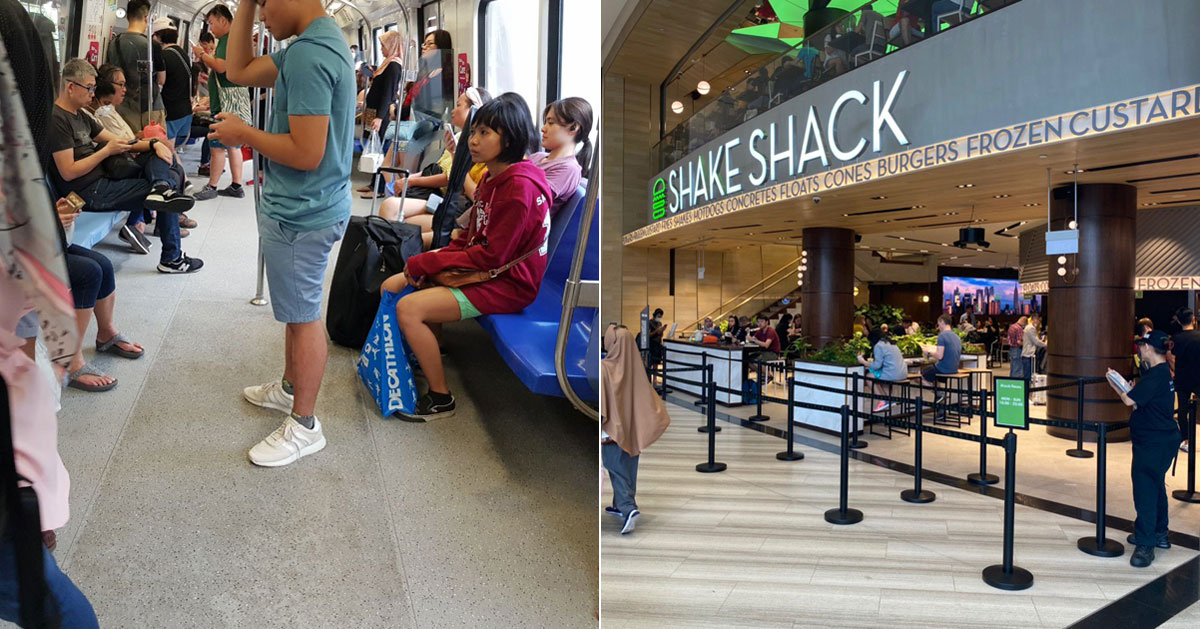Many Singaporeans out and about on Sunday, Feb. 2, 2020 were faced with an eerie calm, a dearth of warm bodies, and unprecedented smooth-flowing traffic throughout the day in and around town.
For those of you who were pinching yourselves and wondering if you were dreaming, or was it really the case that there was an apparent lack of people in Singapore, you are not alone.
Quieter, for sure
A check with retailers, as well as having our Mothership.sg colleagues go out to survey the situation on the ground at several public places on Sunday, confirmed first-hand what many of you suspected.
Yes, it was really palpably quieter and less squeezy.
According to one confectionery in town, the whole of Sunday was slow in terms of sales, which was unlike how sales over the weekend had been for a while now.
Takings were down by at least 20 to 30 percent, according to that retailer.
Others declined to reveal the proportion of the fall in earnings, but said it was obvious there were fewer people out and about.
Factors
Two factors likely contributed to the apparent shortage of the usual Sunday crowd.
One, locals were actively avoiding public places with huge congregation of people, due to the persistent fear that the Wuhan virus will spread.
Two, there is a perceptible drop in tourists, after Singapore closed its borders to all new visitors from mainland China, including foreigners who have been there within the past 14 days.
This measure kicked in on 11:59pm, Saturday, Feb. 1, 2020.
This was on top of the ban on outbound group tours imposed by China.
Photos of tranquil spaces
Here are some photos and the time of day they were shot across Singapore on Sunday, Feb. 2, 2020:
The Somerset MRT waiting area was devoid of the usual crowds at 3pm:


Marina Bay Sands at 4:30pm:


The only place that had more people was the food court, where things were more affordable:

Jewel Changi Airport at 4pm was quiet, as there were no to negligible queues at Shake Shack and A&W:



The Apple store at Jewel was also not as populated with shoppers:


On the MRT at 6:40pm:

At Bugis at 7pm:






By 9pm, Plaza Singapura was a ghost town:


But it also depended on which part of Singapore one was at.
As Chingay 2020 was happening on Feb. 2, some areas still had a sizable, but somewhat thin crowd, as compared to previous years, such as at Chinatown and The Float @ Marina Bay:

Background
Singapore closed its borders to all new visitors from mainland China, including foreigners who have been there within the past 14 days.
This measure came into effect on 11:59pm, Saturday, Feb. 1, 2020, in a bid to stem the spread of the novel coronavirus.
Singapore is a popular destination for Chinese tourists.
Some 248,000 travellers from the mainland entered Singapore in November 2019.
For the whole of 2019, some 3.42 million mainland Chinese tourists visited Singapore.
These figures are culled from the Singapore Tourism Board data.
News of Singapore suspending visas immediately was announced on Jan. 31, to inform travellers in advance.
The move is an escalation of Wednesday’s announcement.
Singapore announced that day it was stopping the entry of new travellers who had been to Hubei province, the epicentre of the virus outbreak. Wuhan is Hubei’s capital.
This is the first time Singapore has imposed travel restrictions due to public health concerns.
In 2003, there were no such restrictions during the severe acute respiratory syndrome (Sars) crisis.
Singapore's decision to close its borders to visitors from China comes on the back of local authorities’ assessment.
It has been assessed that more people in other parts of China are and will be affected by the virus.
The impact of the Wuhan virus outbreak is already felt by the Singapore economy.
Singapore’s tourist numbers from China have already fallen by 80 percent since the outbreak, according to national development minister Lawrence Wong.
That was after China banned outbound group tours.
Chinese nationals making up 18 per cent of all tourism arrivals to Singapore last year,
The government is planning a fiscal package to help businesses and citizens during the crisis.
During the 2003 SARS crisis, the Singapore government disbursed a S$230 million (US$170 million) relief package.
Prime Minister Lee Hsien Loong, told the media on Friday: “It’s going to hurt us. China is a very big source of tourists for Singapore. [With the outbreak], that’s tailed off already considerably.”
PM Lee also said tourism from other sources would also take a hit as people took precautions, pinpointing the food and beverage, travel and hotel industries as those that were “bound to be significantly affected”.
“I expect the rest of the economy also to be affected because with China in semi-lockdown mode now, their economy is bound to slow down and our economy is quite tightly engaged with theirs, they are our biggest trading partner.”
If you like what you read, follow us on Facebook, Instagram, Twitter and Telegram to get the latest updates.
